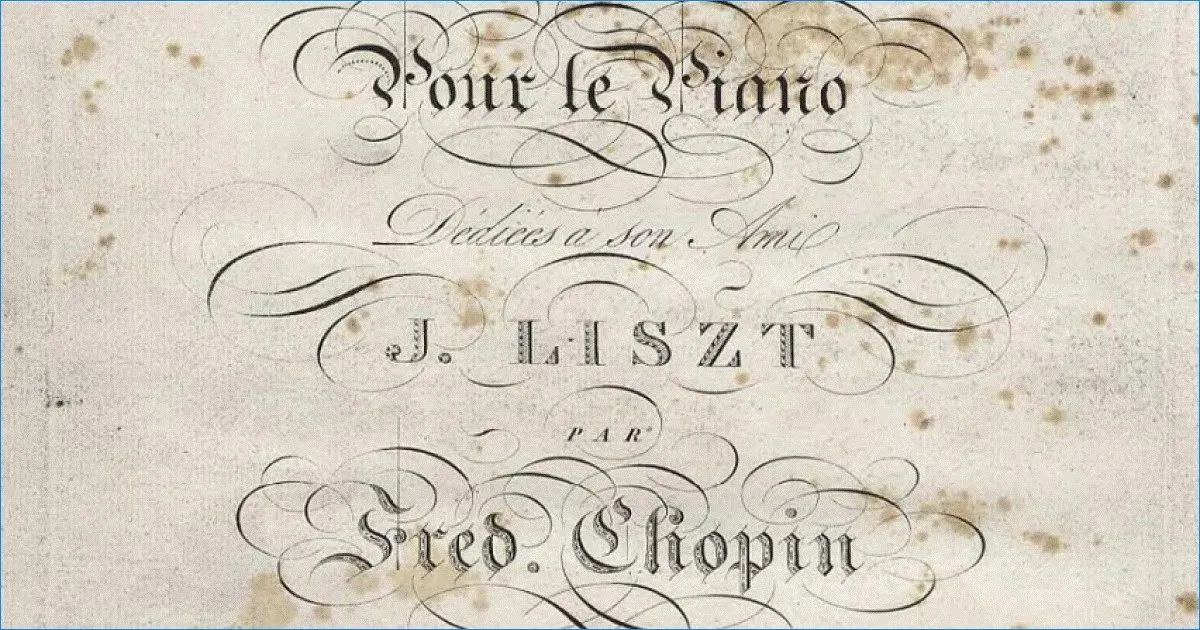Second entry on Chopin’s op.10, no. 1. This entry is about the details of the instrument used by Chopin, as well as an exploration into the custom of nicknaming well-known pieces.*
The Instrument
Something that may have helped Chopin meet the technical demands of this piece was his instrument. Pleyel, Chopin’s preferred piano maker, is often compared with the Érard pianos favored by Liszt, both popular piano makers of their day. Research has compared the quality of sound, size of the hammers, and contrasts them both with modern instruments.1 One key feature escapes comparison, the length of the octave.
It is quite difficult to find a reliable source for this information, but many people speak about how Chopin’s Pleyel piano keyboards may have been slightly smaller than the standard modern size, with some sources mentioning a difference of a few millimeters, to even a scaled piano of 7/8th dimensions.2 These various sizes may have facilitated his performance of the Étude op.10 no.1 , as well as many of his “stretchier” pieces, but the exact measurements on the various keyboards he used remain to be compiled.
Chopin apparently did not think it too important to have a smaller keyboard, or even a larger hand to be able to play his étude. Madame Streicher (née Friederike Muller), one of Chopin’s students, recalls his advice in her carefully-kept diary:3
[Chopin] bade me practice it in the mornings very slowly. ‘Cette étude vous fera du bien’ [this étude will do you good], he said. ‘If you study it as I intended it, it widens the hand and enables you to play runs of wide broken chords, like bow strokes. But often, unfortunately, instead of making people learn all that, it makes people unlearn it.’ I am quite aware that it is a generally prevalent error, even in our day, that one can only play this study well when one possesses a very large hand. But this is not the case, only a supple hand is required.
As a primary source, this account of how Chopin actually used this Étude pedagogically is useful for pianists to be aware of. However I take issue with two things. First, saying the Étude “widens the hand” is anatomically innacurate, but it can make the pianist more able to find strength in an wider hand position. Second, the last fragment, “only a supple hand is required” needs to be qualified: you cannot let your entire hand be held loosely to play this piece clearly and quickly. One needs to hold the ‘shape’ of each chord quite firmly in your fingers, and use a supple wrist and hand to rotate and place it where it needs to go. I have sometimes found the quote “Fingers of steel and wrist of silk” attributed to Chopin online, but I have not been yet able to find this source. Even so, I think it is applicable here.
The Nickname
Another topic of study that interested me was the piece’s nickname. Pianists today sometimes use convenient nicknames to refer to Chopin’s Études, despite the fact that none were given by Chopin himself. This Étude’s nickname in English is The Waterfall Étude”, but it is also known in French as Les Escaliers (Stairs) and in Spanish as La Cascada (Waterfall/Cascade). The English name, if he knew about it, would likely upset him. We have evidence for this in an letter Chopin wrote about English High Society’s musical tastes to his fellow Pole Wojciech Grzymała in 1848.4
Art, here, means painting, sculpture, and architecture. Music is not art and is not called art; and if you say an artist, an Englishman understands that as meaning a painter, architect or sculptor. Music is a profession, not an art, and no one speaks or writes of any musician as an artist, for in their language and customs it is something else than art; it is a profession.… These queer folk play for the sake of beauty, but to teach them decent things is a joke… And every observation [of my playing] ends with: “[sic] leik water,” meaning that it flows like water. I have not yet played to any Englishwoman without her saying to me: Leik water!!! They all look at their hands, and play the wrong notes with much feeling. Eccentric folk, God help them.
Chopin surely wouldn’t be pleased with the nickname we have given to his first étude. In David Dubal’s Art of the Piano, the water comparisons are specifically linked to the Waltz in D-flat major, Op. 64, No. 1 (Minute Waltz),5 but it could also apply to many other of Chopin’s works.
Sources
Footnotes
-
Edmund Frederick, The ‘Romantic’ Sound in Four Pianos of Chopin’s Era, 19th-Century Music 3, no. 2 (1979): 150–53. ↩
-
For example, see Seymour Bernstein discussing the topic here https://www.youtube.com/watch?v=0O1gyGY7ioI. ↩
-
Cited in Frederick Niecks, Frederick Chopin as a Man and Musician (New York: Cooper Square Publishers, 1973), 2: 177. ↩
-
Chopin to Wojciech Grzymała, Hamilton Palace, October 21, 1848, in Chopin’s Letters, ed. E. L.Voynich, trans. Henryk Opienski (New York: Alfred A. Knopf, 1931), 394-95. ↩
-
David Dubal, The Art of the Piano: its Performers, Literature, and Recordings (New Jersey: Amadeus Press, 2004), 472. ↩
